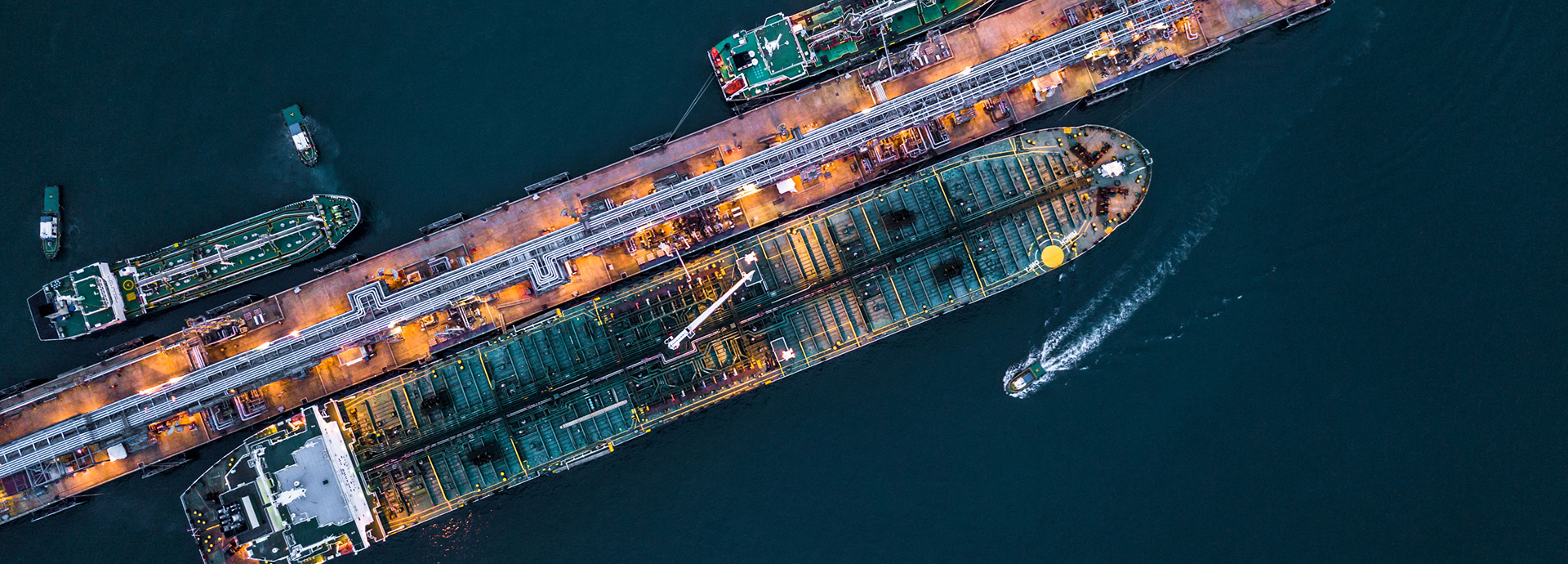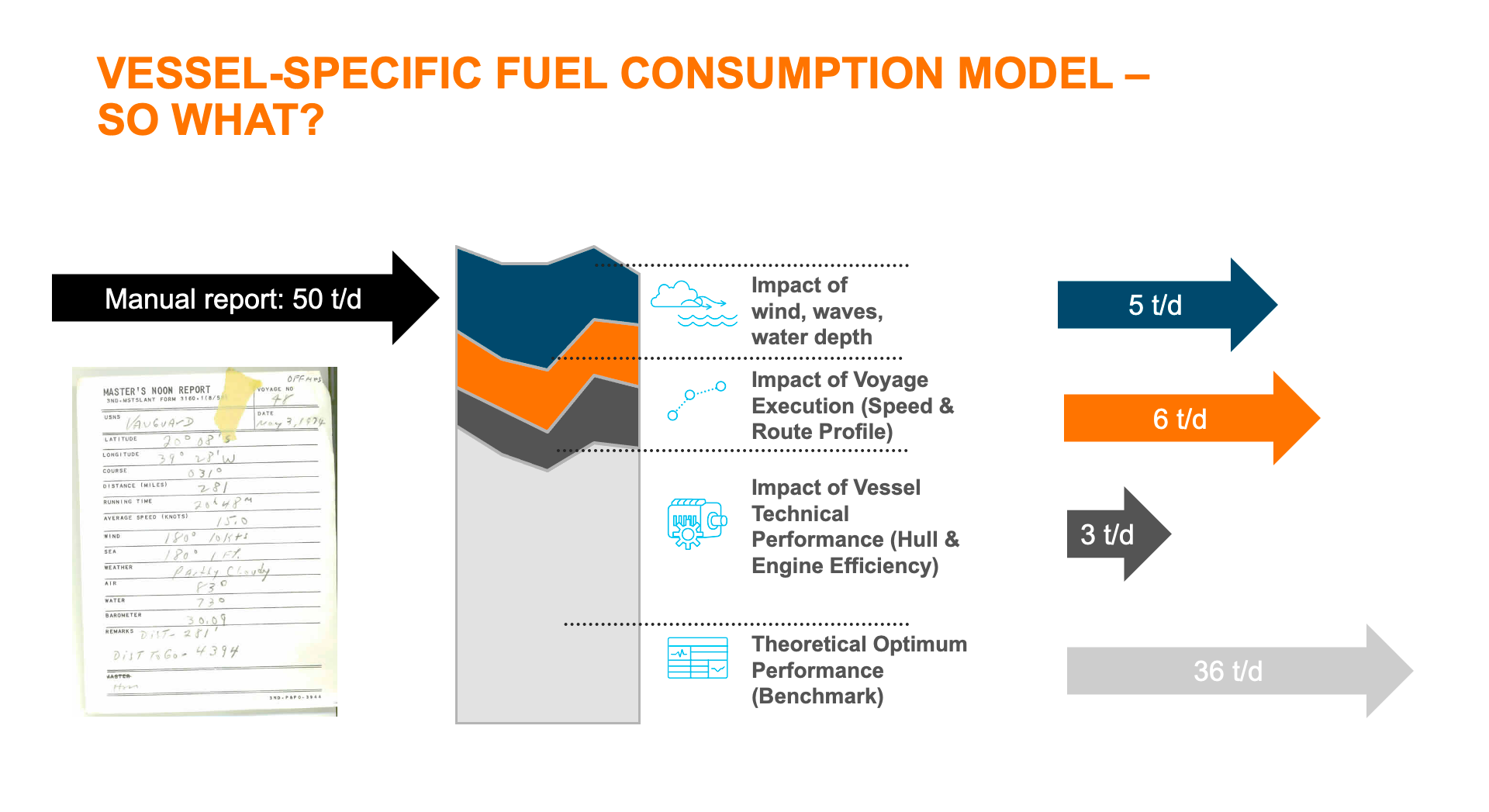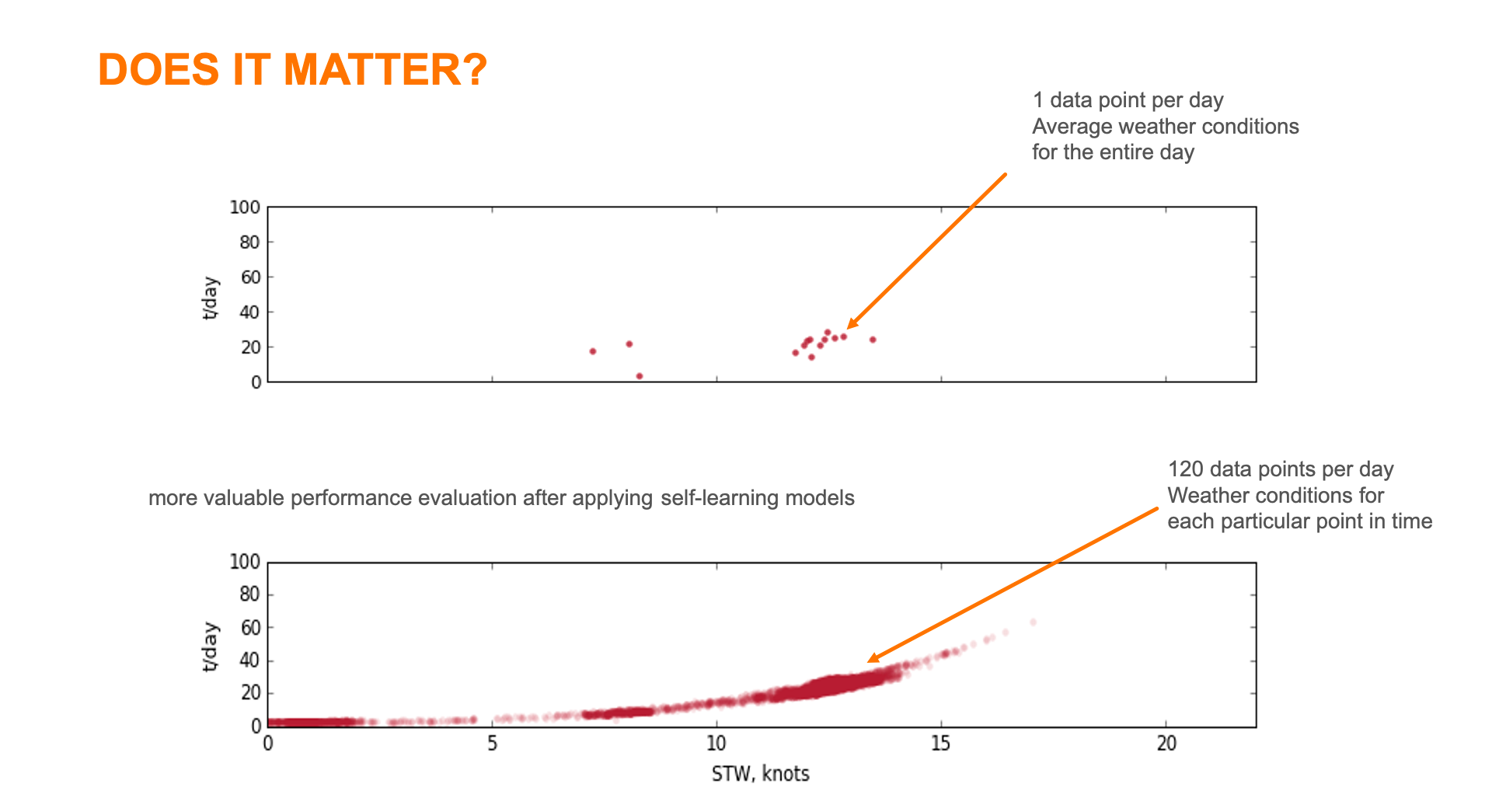

Traditional manual reporting alone carries a high risk of human error; yet automated vessel performance monitoring systems are expensive since they require integration of the vessel’s automation and bridge systems – this is especially challenging on small-to-moderately sized or chartered vessels.
A system consisting of a flow/torque meter installation, integration with a data collection system onboard and access to shore-side cloud storage can easily cost upwards of 50k EUR, excluding ongoing maintenance and support costs. Moreover, for even the most sophisticated automated system, there is still a lot of data that cannot be automatically collected. All parties need access to vessel performance data in order to effectively manage their business. With short business cycles, investing in expensive installations becomes prohibitive.
Meanwhile, fully manual reporting does not provide the required accuracy, nor can it support the growing needs for performance monitoring and prediction. Manual reporting carries a higher risk of human error. And human error accounts for 75% of marine liability losses, according to Allianz Global Corporate & Specialty (AGCS).
A vessel-specific model tuned by data
We can make data acquisition easier by utilising existing, mandatory navigational equipment already available onboard; a connected ECDIS or a Voyage Planning Station. Wärtsilä Voyage’s energy management systems gather data on a high-frequency basis; with our solution, the data is combined with weather forecasts and noon-reports, which already contain efficiency-related quantities such as bunker fuel readings.
By fusing manual reports and automatically gathered data from Wärtsilä Fleet Operations Solution’s (FOS) energy optimisation modules - i.e. the Compliance and Reporting, Voyage & Ports, Hull & Engine modules - modelling of a vessel’s fuel flow rate can be achieved.
It’s a novel method for estimating on-the-spot fuel consumption of a vessel where high-frequency, reliable variables (such as speed over ground, sea state, water depth and wind conditions) are combined with daily aggregated variables (such as fuel remaining onboard and drafts).
"Our philosophy has been to unlock all this potential and provide easy-to-use tools for vessel performance and optimisation. And, more importantly, because of the hybrid approach and minimal implementation complexity (no flow meters, no added sensors, no complex integrations), the solution can be deployed for the entire fleet, not just selected vessels on a pilot-basis," elaborated Daniel Schmode, Head of Solution Advisory, Fleet Operations Solution, Wärtsilä Voyage.
How does it work?
To explain how it works, let's first look at the concepts of virtual fuel flow and fuel flow decomposition.
Virtual fuel flow is the conversion of an aggregated fuel consumption measurement, obtained via FOS SmartLog, to high-frequency readings of fuel flow, which would otherwise require installation of a measuring device (flow meter). SmartLog allows you to measure your vessel’s fuel flow without a flow meter. Hence, with the virtual fuel flow, we get the same output as the flow meter - without the trouble (added cost of sensors & integrations, calibration issues, errors, noise). However, fuel flow readings (virtual or real) are of little use on their own.
In fuel flow decomposition, we are combining (virtual) fuel flows with environmental data (wind, sea state), vessel draft and speed, vessel particulars and general naval architecture principles (for example, relationship between propulsion power and wind resistance). In other words, we already have a generic fuel consumption model; but the measured data allows us to fine-tune the unknown coefficients of this model and turn it into a vessel-specific one. This, ultimately, allows us to predict the fuel flow in different vessel drafts and weather conditions. This prediction improves and automatically updates as more data becomes available.
Applications of the model
Once we have a ship-specific, automatically updated fuel consumption model, the possibilities are endless:
- If we assume the vessel draft as constant and remove the effects of wind/sea state (calm sea), any increases in fuel consumption over time may indicate hull/propeller/engine deterioration.
- If we compare the calm sea consumption at design draft with the sea trial results under the same conditions, we can see how the vessel’s real performance stacks up against the “as built” condition. We may also compare similar vessels against each other.
- If we simulate fuel consumption under charter-party conditions (in terms of speed, draft and maximum weather), it becomes possible to market the vessel based on its real performance (not on theoretical estimation). This enables our customers to become more competitive while managing the risk of performance claims.
In addition, fuel consumption simulation on a future route becomes feasible (route is known, weather is forecasted, speed is known, therefore consumption is predicted). This, in turn, allows us to optimise the speed/RPM profile for minimum fuel consumption and cost. In retrospective analysis, different what-if scenarios and comparisons between actual and optimum execution of a past voyage are possible:
- Optimum speed profile simulation -> to execute the route with the best RPM/speed profile
- Optimum route for minimum distance and bad weather avoidance -> to choose the best possible route
- Optimum operations planning -> to plan perfect voyage route with minimal stoppages, and just-in-time arrival
Post-voyage analytics transform raw data into value generating insights. Feeding back all the collected data into further voyages means increasing predictability. This method allows us to highlight opportunities for further optimisation and to drive continuous improvement.

Ready to make the move?
Did you know that these applications are readily available as part of Wärtsilä Fleet Operations Solution’s energy optimisation modules?
No need for flow meters, nor added sensors. No complex integrations required, nor maintenance costs to be factored in.
This aggregated approach to fuel flow rate modelling removes administrative headaches and the need to interpret large volumes of data; Reducing your crew’s workload so that they can focus on other critical tasks. With automated environment and compliance reporting and seamless data communication from ship to shore; this solution overcomes problems, such as crew overreporting.
FOS’ energy optimisation modules enable data validation on manual reports using measured data. Just think about it: You receive 288 data points per day (one point every 5 minutes), as well as weather conditions for each particular point in time.
FOS is a solution that helps companies manage and improve performance of the entire fleet, not just a handful of vessels. And this is where the real benefits can be realised.
Carlos Losada, Solutions Manager, Wärtsilä Voyage
Are you ready to increase real-time awareness and lower costs?

Virtual fuel metering technology is provided as a part of Wärtsilä Fleet Operations Solution.
Explore more and request a demo here






